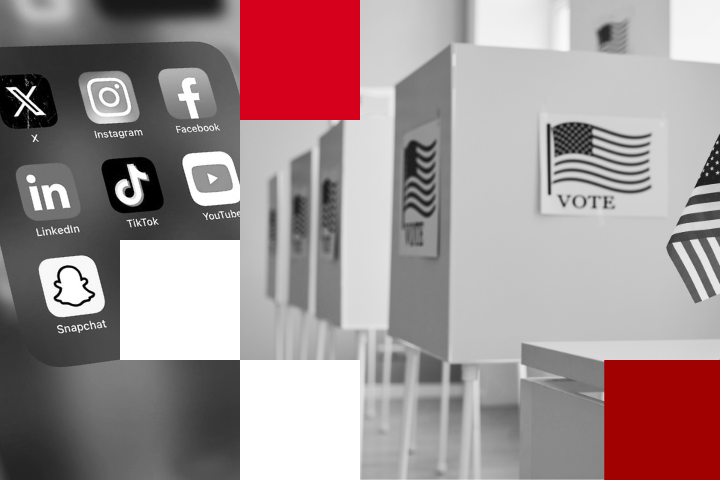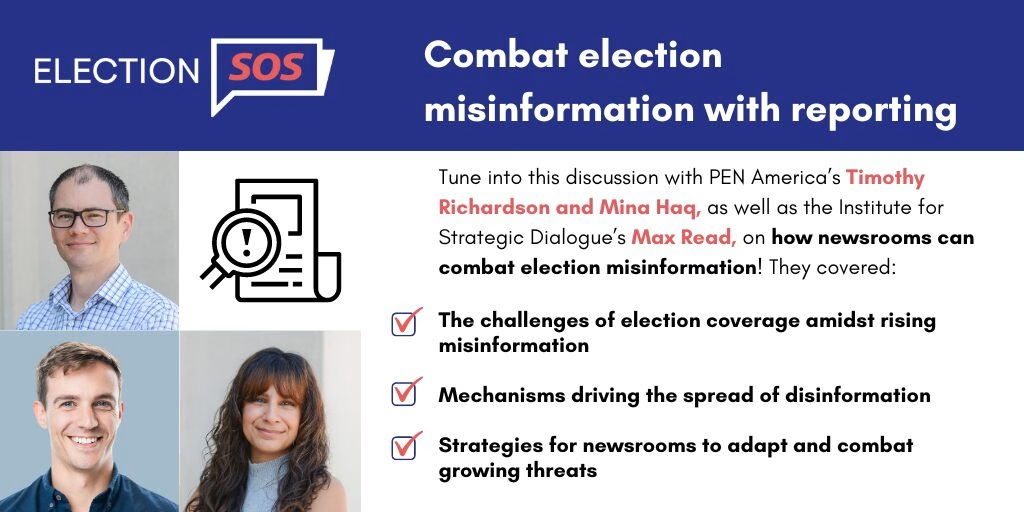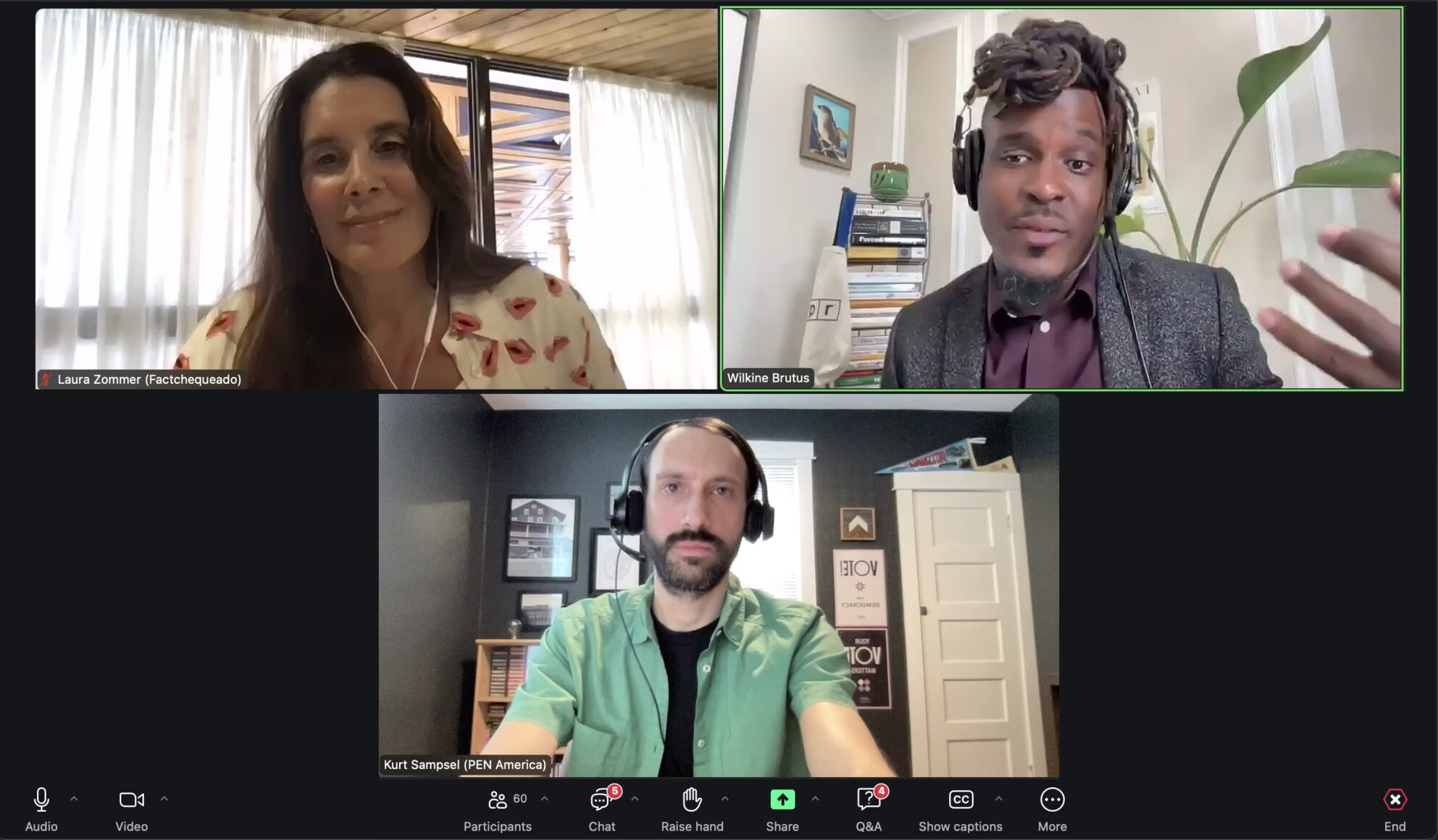As the presidential election gets closer, it’s more important than ever for voters and news consumers to have factual information about candidates, voting processes, deadlines, and policy. This is especially important amid a flood of disinformation, or false information disseminated with the intent to deceive, that has occurred this election cycle. Disinformation isn’t new, but it’s more specific, targeted and sophisticated than it used to be, especially with the advancement of generative AI.
We put together this tipsheet to help voters parse what’s true, what’s false — and how to figure it out themselves.
Familiarize yourself with election rules and timelines
Check trustworthy sites like Vote.gov, which is operated by the federal government, for a guide to voting, including up-to-date information on registration, deadlines and voting rights. There are guides to voting as a college student, as a new U.S. citizen, with a disability, while unhoused, after a felony conviction and more. The site also answers questions about or directs you to information on early voting, absentee voting, ID requirements, election results and timelines.
Vote.org, a nonpartisan nonprofit voting registration and get-out-the-vote platform, has similar information, including a state-by-state breakdown on early voting rules, and what ballots look like in each state. The League of Women Voters is a nonpartisan, grassroots organization that advocates for voter rights and provides information about voting.
The Brennan Center for Justice, a nonprofit, nonpartisan law institute, also has a page devoted to explainers on election processes, threats to election integrity, popular misinformation narratives and more.
There are also community-specific resources available. The Digital Democracy Institute of the Americas is a one-stop shop for Latino-focused election information. The NAACP has a resource page for issues that affect Black Americans and options to see what your ballot looks like. GLAAD has a page devoted to online anti-LGBTQ+ hate disinformation narratives.
Be aware of the disinformation narratives so you can spot them
False narratives trending around this election:
- FALSE: Noncitizens will vote on a large scale, affecting results.
- FACTS: Studies consistently show it’s extremely rare for noncitizens to attempt to vote in state and federal elections.
- FALSE: Administrative errors – such as precincts running out of ballots or voting machines jamming – are a purposeful effort to game the system
- FACTS: Elections are run by people – and people can make innocent mistakes. Not everything will run perfectly on Election Day. Still, US elections are remarkably reliable
- FALSE: Normal activities from news organizations and public officials that occur regularly – but are now happening before an election – are “election interference”: These claims can include lawful activities such as fact-checking, public statements, or other well-established activities that routinely surround elections.
- FACTS: This is an attempt to suggest illegality where there is none.
- FALSE: Lack of voter ID means voter eligibility can’t be verified: Some people claim that without voter ID laws, election officials cannot verify eligibility.
- FACT: 36 states already have voter ID laws, including swing states like Arizona, Wisconsin and Georgia, and the remaining states verify eligibility using other methods. Moreover, overly burdensome photo ID requirements can block millions of eligible Americans from voting.
- FALSE: Electronic voting equipment is easily hackable, so ballots should be counted by hand.
- FACT: Many checks and safeguards exist to ensure these machines accurately count ballots.
- FALSE: A delay in election results is a sign of wrongdoing.
- FACT: It’s perfectly normal for results not to be announced on election night. In fact, to make sure that every vote is counted, there may be some delays. Laws in certain states – Pennsylvania and Wisconsin, for example – also prevent workers from processing ballots received before Election Day, which can create delays.
- FALSE: Updates in vote totals are “spikes” and evidence of fraud.
- FACT: Different states have different ballot-counting rules and processes, and partisan divides in how voters prefer to cast their ballots or when votes come in and are counted from different localities that lean toward one or another party can lead to what was called the “red mirage” or “blue shift” in 2020. Patience is key.
Critically evaluate your political news diet
Consider where you get your political information. Is it from social media? Family or friends? Political podcasts? One or two news outlets? Are those outlets credible or do they have a political slant?
To discern an outlet’s credibility, check whether it has a clear and transparent editorial process, whether it employs rigorous fact-checking and has ethical guidelines on anonymous sourcing, attribution, and corrections. Check whether the outlet clearly labels its opinion and analysis content versus its news coverage. If you’re looking into one particular news event or claim, seek multiple outlets that all employ these editorial rules to get a rounded, complete view. It’s also important to be aware of the different types of news sources out there: Cable, legacy news organizations, nonprofit news organizations, and independent journalists are just a few. There’s also user-generated media on social platforms such as TikTok and Youtube.
For more information on vetting news sources, check out the News Literacy Project’s toolkit.
Be aware of AI-generated election content
AI tools can easily be used to generate fake images, audio and video to try to influence voters. These types of deepfakes supercharge the spread of disinformation narratives and can diminish trust in all news, even when it’s accurate. They are often designed to incite strong emotions. It remains difficult to definitively prove whether something is a deep fake, especially as the technology advances, but there are still ways to be relatively sure.
Voters can employ the same tools to evaluate AI-generated news as other types of mis- and disinformation. Does this clip spark particularly strong emotions, such as fear or anxiety? Does it confirm preexisting beliefs or not make sense within historical context? For example, if a politician is shown saying something that contradicts their previous statements on an issue, it’s worth considering the veracity of the clip.
There’s also deep fake detection technology. Like the other methods mentioned, these detectors are not foolproof, but some are more reliable than others. The Institute for Strategic Dialogue, a nonprofit that battles polarization, extremism, and disinformation, recommends TrueMedia’s deepfake detector.
Respectfully correct people when they unintentionally spread false information
You know the drill: Your aunt, uncle, cousin or friend shares a piece of political misinformation, and you feel compelled to respond. It doesn’t have to be uncomfortable or contentious, if you follow PEN America’s guide on how to talk to friends or family who share misinformation. Here are the highlights:
- Verify the content is misleading or false before you engage: Before you attempt to correct someone who has shared what you believe to be misinformation, fact-check the story yourself on a credible website like PolitiFact or FactCheck.org.
- Decide whether to publicly or privately comment: If the information is shared publicly online, it can be helpful to debunk it publicly online as well, especially if you can link to a widely credible source. However, your engagement with the post may also give the false content greater visibility, since social media algorithms boost any content that elicits a response. If something was just posted, try sending a private note politely pointing out that it’s incorrect. The person behind the post might also be more receptive if they don’t feel called out publicly. But if a post is getting a lot of likes and comments already, a public correction could make a big difference in reducing the harm it can do.
- Consider the perspective of the person who shared the false information: It can be embarrassing, shameful, even anger-inducing when someone calls us out for sharing false stories. We’ve probably all accidentally shared “fake news” at some point. Take care to use a supportive and positive tone. Otherwise, you risk alienating the person, making them less receptive to the information you’re trying to share. You might say something like, “I was curious about the thing you posted, so I did some Googling and here’s what I found…”
- Avoid escalation: If it seems as if the other person is getting defensive, remember that it can be hard for people to accept corrections, and it is tough to change attitudes. Offer them the tools to fact-check what they see, and take it upon yourself to proactively share factual information and resources on your own feed.











